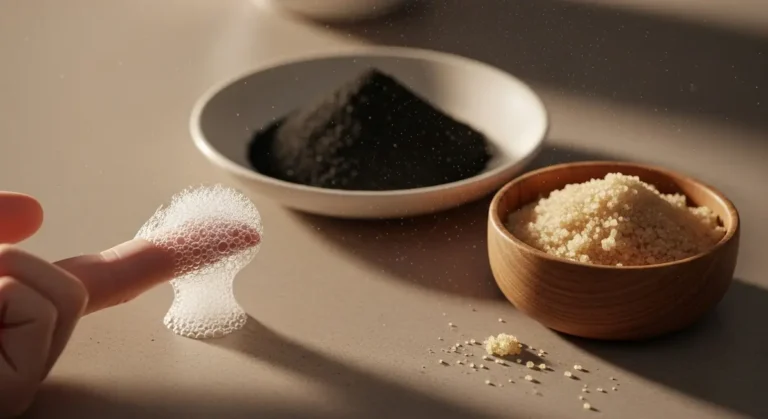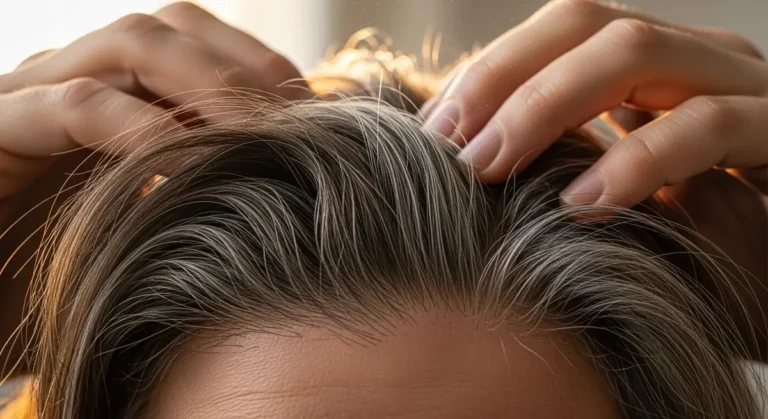Climate plays a powerful role in hair health — from humid, frizz-prone days to cold, brittle winters and intense UV exposure at the beach. This article translates global hair studies and cosmetic-lab findings into practical guidance so readers worldwide can adapt routines to local weather. Using evidence-based thresholds (like humidity and UV index signals), you’ll learn why texture and maintenance needs change and exactly how to adjust products and habits for healthier, more manageable hair.
Humidity and Hair: Frizz, Swelling, and Oil Balance

Humidity is one of the clearest environmental drivers of how hair looks and feels. When relative humidity rises above roughly 60–70% the air contains enough free water molecules that hair fibers begin to absorb moisture from the atmosphere; cosmetic-lab measurements show individual fibers can swell up to 10–15% in diameter. That microscopic swelling forces the cuticle scales apart, allowing humectants and water to penetrate the cortex and producing the familiar visual result: frizz — a halo of lifted, misaligned fibers that scatters light and breaks smooth shape.
At the molecular level, much of hair’s temporary shape depends on hydrogen bonds in keratin. These bonds are weak and form or break in seconds when wet or dry: water interrupts hydrogen bonding between keratin chains and the hair’s set loosens; when the fiber dries the hydrogen bonds can reform. In high humidity this cycle of disruption and partial reformation happens repeatedly, so styled curls or straightened looks relax much faster. Cosmetic-lab stress tests repeatedly show that above ~70% RH, set styles lose measurable hold in hours rather than days — a practical reason why humid summers feel like a daily fight against the brush.
Humidity also changes how oil behaves on the scalp and hair. Warm, humid air increases scalp perspiration and can reduce the viscosity of sebum, making it spread more easily down the shaft; clinically, this often shows as oilier roots but limp mid-lengths and ends that still look dry. In some lab observations increased moisture in the air also promotes more uniform sebum redistribution, which can make hair appear weighed-down and less textured even as the cuticle lifts and frizz increases. The combined effect is a mismatch: oily roots, puffy mid-lengths, and frizzy ends — the hallmark of humid days for many hair types.
Knowing the mechanisms points to targeted tactics. If the environment is regularly above ~60% RH, shift away from heavy humectants alone (glycerin-rich formulas can draw moisture and sometimes worsen puffing in very humid weather) and favor products that create a thin, semi-occlusive barrier on the strand. Effective anti-frizz ingredients tested in labs include low- to mid-weight silicones (dimethicone, amodimethicone, cyclomethicone) which form a moisture-resistant film; acrylic or vinyl polymers (PVP/VA, acrylates) that set a flexible hold against humidity; and cationic conditioners (behentrimonium chloride, stearalkonium chloride) that smooth cuticles. Lightweight oils and esters (argan oil, caprylic/capric triglyceride) can add shine without excessive weight for finer hair.
Practical, climate-smart daily tweaks:
- Shampoo timing: if the scalp gets oily quickly in humid weather, wash in the morning to remove overnight sebum and sweat so roots don’t sit under oil during the day; if washing every day is drying, use a light dry shampoo between washes to control root oil without stripping moisture.
- Conditioning: use lightweight, rinse-out conditioners focused on mid-lengths and ends; avoid heavy creams at the roots. Consider leave-in conditioners with anti-frizz polymers rather than humectant-dominant formulas when RH is high.
- Sealing serums and films: apply a small amount of a silicone-based serum to damp hair before blow-drying or air-drying to form a humidity-resistant layer; for thicker or curly hair choose amodimethicone formulas that preferentially deposit on damaged areas.
- Styling: opt for humidity-resistant sprays and polymer-based setting products rather than relying solely on heat styling; finish with a light anti-humidity hairspray if you need longer hold.
- Weekly maintenance: use a clarifying or chelating rinse every 7–14 days to remove residual buildup that interferes with barrier-forming products and contributes to limpness at the roots.
Small technique changes amplify product choices: blot, don’t rub with a microfibre towel to avoid raising the cuticle; use a cool-shot on the hair shaft after blow-drying to help close the cuticle; and apply serums sparingly (less is more on humid days) starting from mid-length to ends. For different textures, a quick rule: fine hair benefits from lightweight silicones and polymer sprays; coarse or curly hair may tolerate slightly richer oils but still benefits from a sealing polymer to prevent cuticle lift.
Putting evidence into practice means using simple thresholds — when local relative humidity is regularly above ~60% switch to anti-humidity formulations and sealing strategies; when it’s below that, humectants and moisture-attracting ingredients perform better. The goal is practical: reduce cuticle lift, control unwanted oiliness, and preserve styling longevity with a handful of targeted swaps rather than a cupboard of products.
UV, Heat and Cold: Protein Damage, Color Fading, and Breakage

Laboratory and field studies converge on a clear message: sunlight and heat actively weaken hair while cold, dry air removes the lubricating and plasticizing factors that keep strands flexible. Cosmetic-lab tensile testing and controlled exposure experiments show that high ultraviolet (UV) exposure and sustained heat accelerate keratin breakdown, raise cuticle lift and porosity, and accelerate pigment loss—some studies documenting tensile strength declines of roughly 20–30% after intense UV exposure. Those same lines of evidence explain why color fades faster after a summer of beach days and why chemically treated hair often feels limp and fragile after repeated sun+heat cycles.
At the molecular level, UV photons and heat increase oxidation of amino acids (including cystine), cleave disulfide and hydrogen bonds, and roughen the cuticle surface. Increased porosity means the fiber holds water inconsistently and allows dye molecules to leach more readily, so color fades unevenly and brightness drops. Heat from styling tools compounds the effect: above certain temperatures the hair’s cohesive bonds lose their structural integrity and small microfractures can form, creating weak spots that encourage breakage during combing or styling.
Cold, dry climates damage hair in a different but equally important way. Sebum production typically falls in winter, and low ambient humidity removes surface moisture; the result is reduced plasticization of the keratin matrix. Fibers become stiffer and more brittle, cuticles are more likely to lift or crack, and friction-related damage (split ends, mechanical breakage) rises—especially when hair is handled roughly while very dry. Unlike UV/heat damage, the core issue in cold climates is not bond cleavage from photons but loss of water and oil that normally make hair resilient.
Protective strategies follow directly from those mechanisms. To reduce sun- and heat-driven protein loss and color fading, prioritize UV filters and antioxidants in daily care: leave-in sprays or serums with broad-spectrum UV filters, formulas containing vitamin E, vitamin C derivatives, or ferulic acid to neutralize free radicals, and color-protecting shampoos that limit pigment stripping. Limit the combination of high-heat styling immediately after prolonged sun exposure; when styling is necessary, use thermal protectants and keep tool temperatures moderate.
Protein-replenishing treatments restore some structural integrity—products with hydrolyzed keratin, silk proteins, or short-chain peptides temporarily fill weakened sites and increase measured tensile strength. Use these as targeted treatments rather than daily heavy applications: a monthly or biweekly protein masque can restore elasticity and reduce breakage risk for sun- or heat-compromised hair. For longer-term strengthening, consider pairing protein replenishment with collagen-focused care as part of periodic strengthening routines.
In colder, drier seasons focus on moisture retention and barrier repair. Swap to richer conditioners, incorporate humectants (glycerin, low-concentration hyaluronic solutions) balanced with occlusives (natural oils or lightweight silicones) to lock water into the cuticle. Avoid very hot showers and limit daily shampooing if scales are excessively lifted; when washing, finish with cool or lukewarm water to help smooth the cuticle. Nighttime oiling and gentle detangling with a wide-tooth comb reduce frictional damage when fibers are brittle.
Practical, climate-aware habits reduce cumulative damage: wear a hat or UV-protective scarf during peak sun to limit direct photon exposure; rinse salt and chlorine promptly after swimming; reduce bleaching or aggressive chemical services right before long sun or heat exposure; and tailor treatment frequency—more antioxidant and UV-protective leave-ins in high-UV months, more occlusive conditioning in cold, low-humidity months. Small, targeted changes based on local weather patterns preserve color, retain tensile strength, and lower breakage over time.
Ultimately the best protection is both preventive and restorative: block or neutralize the external stressors (UV filters, antioxidants, physical covers) and replenish what’s been lost (proteins, oils, and moisture-retaining ingredients). Those combined steps—selected for the specific climate you live in—keep hair stronger, more colorful, and less prone to breakage through seasonal extremes.
Practical Climate-Based Hair Care: Routines and Product Choices by Environment

Climate imposes clear, measurable stresses on hair fibers and the scalp, so matching routine and product choices to local weather pays off faster than adding random treatments. Below are practical, evidence-backed routines for four common environments — humid, arid/cold, coastal, and high-UV — with clear thresholds and product targets so you can make small, effective swaps.
Read the signals: thresholds that trigger product changes
- Relative humidity (RH) > 60%: switch to anti-humidity approaches (sealants, lightweight silicones, anti-frizz polymers). Cosmetic-lab and structural studies show hair fibers swell and cuticle lifting increases markedly above roughly 60–70% RH, producing frizz and faster loss of hydrogen-bonded styling.
- RH < 30% or sustained cold below ~5°C: prioritize humectants plus occlusives to prevent brittleness; sebum production drops and strand moisture loss accelerates.
- UV index > 6: add UV-filtering sprays and topical antioxidants; lab measurements report tensile strength loss and pigment fading with high cumulative UV exposure (reports indicate up to 20–30% tensile loss in heavily exposed fibers).
- After saltwater exposure (beach, ocean spray): use a clarifying/chelating rinse to remove salt and mineral buildup, then restore moisture and lipids.
Humid climates (tropical, monsoon, summer-coastal cities)
Humidity increases fiber swelling and lifts cuticles, so the goal is to reduce water uptake at the cuticle surface and keep weights light so styles hold.
Routine and frequency
- Wash 2–4 times per week depending on scalp oiliness; frequent washing can help if the scalp is oily but avoid overwashing porous ends.
- Use a lightweight, sulfate-free shampoo and a brief, rinse-out conditioner applied only to mid-lengths and ends to avoid weighing roots.
- After towel-drying, apply a thin, lightweight silicone serum (dimethicone or phenyl trimethicone–based) or anti-humidity polymer, focusing on lengths and flyaways.
- Finish with a light-hold, humidity-resistant styling product (anti-frizz crème or a humidity-control spray) when RH > 60%.
Product recommendations and ingredients
- Anti-humidity: lightweight silicone serums, dimethicone copolymers, or humidity-control polymers.
- Styling: flexible-hold gels or creams with anti-humectant properties rather than heavy oils.
- Avoid glycerin-heavy leave-ins on very humid days if outdoor RH is above ~70%; glycerin can pull excess moisture into fibers and worsen frizz in those conditions.
Styling tips
- Style hair when slightly damp and lock in with a sealant; drying fully with cool-to-warm air and finishing with a blast of cool air helps set styles that resist frizz.
- Use combs with wide teeth and smooth edges to prevent mechanical lifting of the cuticle.
Evidence note: laboratory humidity-swelling studies report up to 10–15% diameter change in fibers at high RH, which explains rapid frizz onset and shorter style longevity.
Arid and cold climates (continental winters, deserts)
Low ambient humidity and cold temperatures reduce sebum, increase static, and make hair brittle — aim to increase water retention and reduce mechanical damage.
Routine and frequency
- Wash 1–3 times per week depending on scalp type; dry scalps tolerate lower wash frequency but need richer topical moisture.
- Use a gentle, moisturizing shampoo and a richer, leave-in conditioner or cream on mid-lengths and ends.
- Introduce humectants such as glycerin (at moderate levels), propanediol, or hydrolyzed hyaluronic analogs into leave-ins and masks, combined with occlusives (squalane, heavier plant oils, petrolatum in small amounts) to lock moisture.
- Add a weekly protein-replenishing mask if hair shows elasticity loss; cosmetic labs show targeted protein treatments can recover measurable tensile properties in damaged fibers.
Product recommendations and ingredients
- Humectants: glycerin, sorbitol (use balanced formulas when RH is <30%).
- Occlusives: squalane, jojoba oil, small amounts of heavier esters for ends.
- Strengthening: hydrolyzed keratin or collagen-containing treatments can temporarily increase tensile strength; choose formulas with balanced protein-to-moisture profiles to avoid stiffness.
Styling tips
- Avoid hot styling temperatures; reduce heat tool temperatures by 10–20% and use heat protectants that include film-formers and protein fragments.
- Sleep on satin or silk to reduce friction and breakage.
Coastal environments (salt spray, wind, mixed humidity)
Salt and minerals from ocean spray alter surface lipids, roughen cuticles, and increase tangling; wind increases mechanical stress. The priority is removal of corrosive residues, rehydration, and sealing.
Routine and frequency
- After beach or heavy salt exposure: rinse immediately with fresh water when possible; follow with a clarifying shampoo or a chelating formula containing EDTA or citric acid to remove salt and mineral deposits.
- Routine washes 2–4 times weekly otherwise, with a nourishing conditioner and periodic deep-conditioning masks.
- Apply a leave-in conditioner with lipids and film-formers after rinsing to restore surface integrity.
Product recommendations and ingredients
- Clarifying rinses: chelating shampoos (EDTA or disodium EDTA, citric acid) for occasional use after salt exposure.
- Hydration and seal: glycerin-containing leave-ins combined with light oils and silicone sealants to smooth cuticles.
Styling tips
- Detangle hair when wet with a wide-tooth comb and a slip-enhancing conditioner to minimize breakage from wind-tangled strands.
- Use a final rinse with cool water to flatten cuticles and reduce porosity.
Evidence note: salt crystals adhering to the hair shaft raise surface roughness and increase friction; removing them prevents accelerated mechanical wear.
High-UV regions (equatorial, high-altitude sun-exposed areas)
UV radiation degrades pigment and keratin, increasing porosity and reducing tensile strength over time. Protection and antioxidant defense are key.
Routine and frequency
- Daily protective steps when UV index > 6: apply a broad-spectrum UV-filtering spray to hair and scalp before sun exposure, reapply after swimming and every 2–3 hours for extended exposure.
- Regular antioxidant support: formulations with vitamin E, vitamin C derivatives, and ferulic acid help neutralize free radicals at the fiber surface.
- Weekly restorative treatments: protein–moisture balance masks to rebuild strength after prolonged sun exposure.
Product recommendations and ingredients
- UV protection: leave-on UV-filter sprays designed for hair (broad-spectrum filters used in haircare), combined with film-formers that help reflect/diffuse UV.
- Antioxidants: tocopherol (vitamin E), ascorbyl tetraisopalmitate or other stable vitamin C derivatives, and botanical antioxidants in leave-ins.
Styling tips
- Cover up where possible (hats, scarves) during peak sun hours; wet hair is more susceptible to UV-related pigment loss.
- Avoid chemical services immediately before prolonged sun exposure; recent lightening or chemical work increases photosensitivity and accelerates fading.
Practical, climate-smart shopping checklist
- Humid areas: lightweight silicone serum, anti-humidity spray, flexible-hold styling product.
- Arid/cold areas: glycerin-containing leave-in, richer oils or occlusives, weekly protein–moisture masks.
- Coastal areas: clarifying/chelating shampoo, salt-removal routine, restorative masks and sealants.
- High-UV areas: hair UV-filter spray, topical antioxidants, regular strength-rebuilding treatments.
Small adjustments make a big difference. Use local weather metrics — relative humidity and UV index — as your trigger points: switch to anti-humidity products when RH exceeds ~60%, add UV protection at UV index above 6, and increase occlusive and humectant use when RH is under ~30% or temperatures remain below ~5°C. These changes are supported by cosmetic-lab findings and global hair studies showing measurable changes in fiber swelling, porosity, and tensile strength under different environmental stresses.
Adopting a climate-based routine isn’t about more products, it is about the right product in the right conditions: seal when moisture threatens to destabilize style, hydrate when air is dry, clarify after salt, and shield from intense sun to preserve strength and color.
Conclusion
Adapting your hair care to the climate isn’t about a dozen new products — it’s about understanding what your environment is doing to your hair and choosing targeted interventions. Use humidity thresholds, UV-index guidance and the simple climate-specific routines above to reduce frizz, prevent breakage and protect color. Small, evidence-backed adjustments (product swaps, timing, and protective habits) make daily maintenance easier and keep hair healthier year-round.
Want a tailored routine? Read our climate-based haircare guide: Explore our climate-based haircare guide



